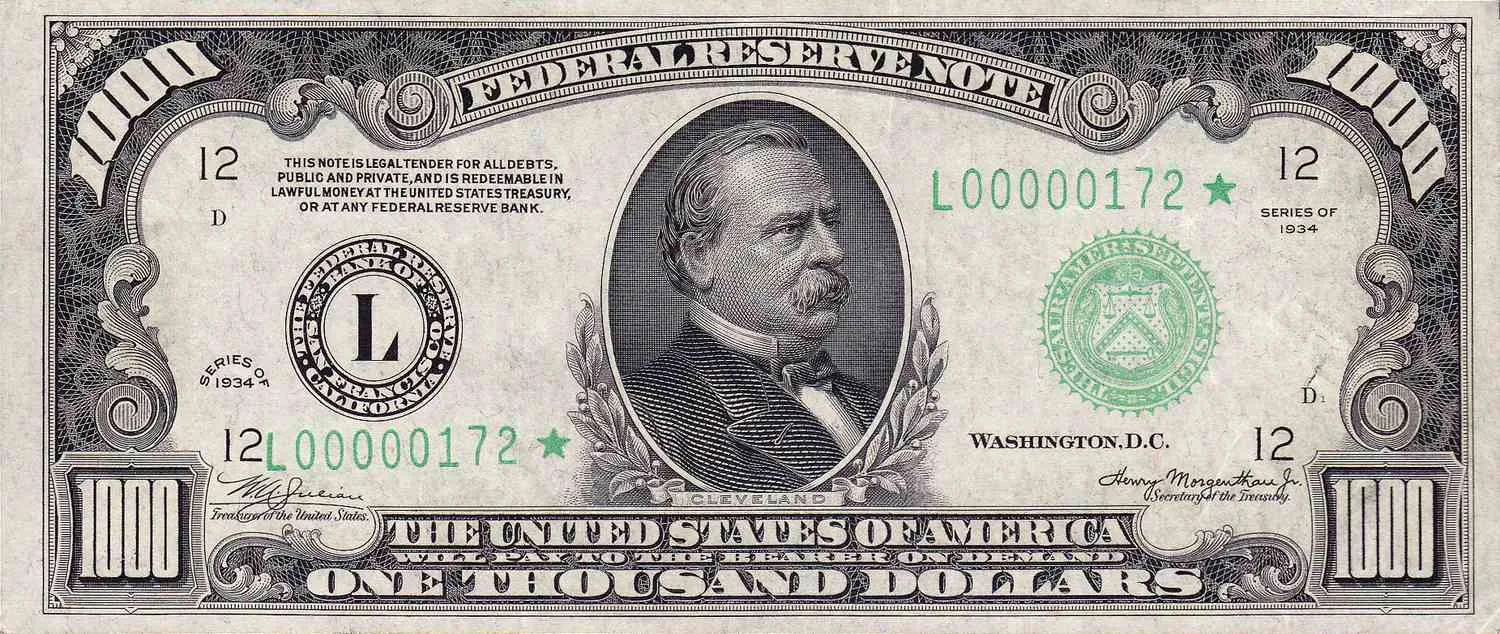
Currency plays a vital role in the economic systems of nations, facilitating transactions and acting as a store of value. Among the many forms of U.S. currency, high-denomination notes hold a unique place in history. These bills, often valued at $500, $1,000, $5,000, and $10,000, are more than just money; they are artifacts that reflect the evolution of the American financial landscape.
Early Beginnings and Purpose
The origins of high-denomination U.S. currency date back to the late 18th century. The first high-denomination notes were issued by the Continental Congress during the Revolutionary War to finance the conflict. These early notes, which included denominations as high as $1,000, were largely a response to the need for significant funds to support the war effort. However, due to rampant inflation and counterfeiting, these notes lost value quickly and were eventually rendered obsolete.
The real journey of high-denomination currency began with the establishment of the United States Treasury in 1789 and the subsequent creation of the First Bank of the United States in 1791. High-denomination notes were initially used primarily for large financial transactions between banks and for government and commercial transactions. They facilitated the transfer of large sums of money in a more convenient and secure manner than transporting gold or silver bullion.
The Rise of High-Denomination Notes
The most famous series of high-denomination U.S. currency came into existence in the 19th and early 20th centuries. The Series of 1861, which included $500 and $1,000 notes, was a critical part of Civil War financing. These notes were issued by the federal government to help fund the Union war effort.
Following the Civil War, the demand for high-denomination currency continued to grow, driven by the expanding U.S. economy and the need for large transactions. The Series of 1918 saw the issuance of $500, $1,000, $5,000, and $10,000 notes, which were primarily used by banks and the federal government.
The $10,000 bill, the highest denomination ever issued for public use, featured the portrait of Salmon P. Chase, who served as Secretary of the Treasury under President Abraham Lincoln. This bill was part of the Federal Reserve Note series and was primarily used for transactions between Federal Reserve Banks.
The Decline of High-Denomination Currency
The usage of high-denomination currency began to decline during the mid-20th century. Several factors contributed to this decline. The introduction of more advanced banking systems, including wire transfers and electronic funds transfers, reduced the need for physical high-denomination currency. Additionally, the Great Depression and World War II shifted the focus towards smaller denominations that were more accessible to the general public.
In 1969, President Richard Nixon's administration announced the discontinuation of high-denomination bills. The primary reasons for this decision were the increasing concerns about money laundering and the use of these notes in organized crime. By July 14, 1969, the Treasury and the Federal Reserve discontinued the distribution of $500, $1,000, $5,000, and $10,000 bills. Although these notes remain legal tender, they are no longer printed and are rarely seen in circulation today.
Collectibility and Historical Significance
Despite their obsolescence in daily transactions, high-denomination notes have become highly sought-after collectibles. Numismatists and history enthusiasts prize these bills for their rarity, historical significance, and unique designs. High-denomination notes in good condition can fetch substantial prices at auctions and among private collectors.
The historical significance of high-denomination U.S. currency extends beyond its monetary value. These bills are a testament to the evolving economic landscape of the United States. They reflect periods of expansion, war, and technological advancement in banking and finance. For instance, the $10,000 bill with Salmon P. Chase's portrait serves as a reminder of Chase's pivotal role in financing the Union during the Civil War and his efforts in establishing a national banking system.
The Legacy of High-Denomination Currency
High-denomination currency, while no longer in circulation, leaves a lasting legacy. It represents a time when physical money was the primary means of large-scale transactions and provides insight into the historical context of the American economy. These notes are emblematic of the nation's financial history and the shifts that have shaped modern banking and currency systems.
In contemporary times, the legacy of high-denomination currency can be seen in the continued evolution of financial instruments and the increasing reliance on digital transactions. As technology advances, the need for physical currency diminishes, but the historical value and intrigue of high-denomination notes endure.
Conclusion
The history and significance of high-denomination U.S. currency offer a fascinating glimpse into the economic and financial evolution of the United States. From their early use in funding wars to their decline with the advent of modern banking technologies, these notes are more than just pieces of paper; they are historical documents that tell the story of a nation's growth and transformation. For collectors and historians alike, high-denomination bills are invaluable relics that preserve the legacy of America's financial past.
